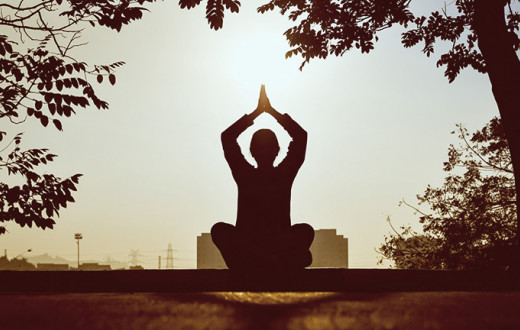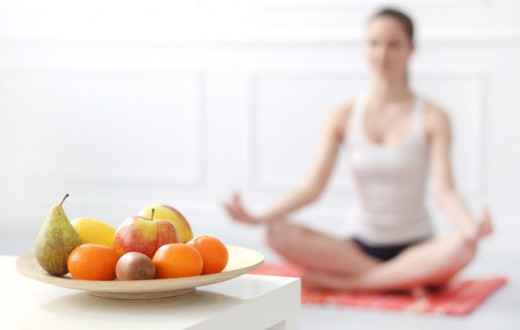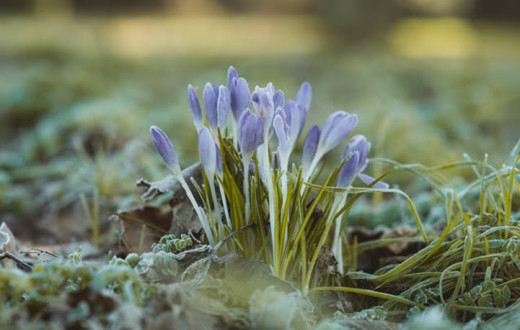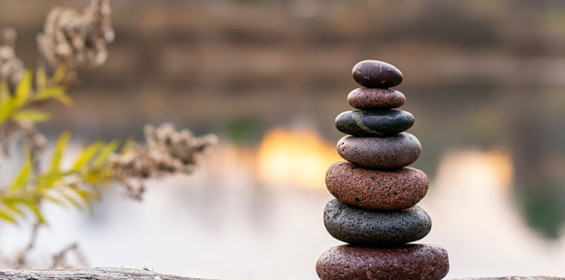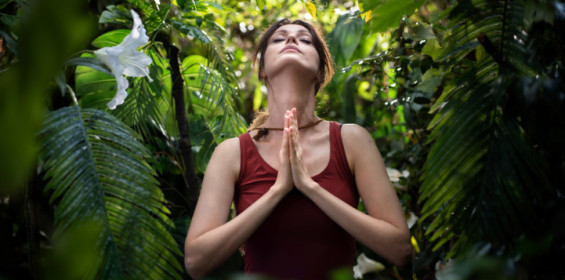By Sejal Shah | Posted: January 29, 2020
In many regions of the Northern Hemisphere, the cold, wet Kapha season is beginning, creating a ripe environment for imbalances. In the US, early winter is typically a Vata Season (dry, rough and cold season) right up to February. Late winter (mid-Feb up to the end of spring in May), is Kapha Season (cold, heavy and moist). In this post, we’ll be focusing on the various techniques for balancing Kapha through the cold, wet months of late winter upto spring. In some regions of the USA, there is Vata and Kapha overlap during early winter: here is how you can balance your dosha during such an overlap.
The Kapha dosha is dominated by the elements of earth and water. The key seasons at which Kapha constitutions are most at risk are the cooler, wetter months during winter and early spring. With the hotter summer months, a Kapha often feels more revived and rejuvenated as the heat has helped melt away excess moisture and damp that may have accumulated over the winter and spring. But as autumn ends and winter starts, chances of its imbalance increase if proper care is not taken. Stay healthy with these Kapha dosha-specific tips to encourage balance from February to May.
Know your dosha
When you learn to look at the world from an Ayurvedic perspective, it won’t be long before your view on achieving and maintaining your own personal sense of wellness will become not only clearer but also attainable in ways that you may not have thought possible.
One of the first steps toward gaining clarity and control over your own health is understanding the three dynamic energies known in Ayurveda as doshas. These are Pitta, Vata, and Kapha. Doshas, put very simply, are the biological energies that make us who we are as individuals. They are not one size fits all! Your dosha is not only as unique as you are – it is what makes you so unique.
What does it mean to be Kapha?
Each of the three doshas (namely Pitta, Vata and Kapha) project both mental and physical attributes that will reflect the elements related to them. The elements related to the Kapha dosha are earth and water. This manifests in people who are thought to have a dosha balance dominated by Kapha as both a solid physical frame, as well as a strong, calming presence and grounded personality. Learn more about the Kapha dosha and personality here.
Kapha in winter – losing your balance
When you fail to take care of yourself properly, your doshas can become imbalanced. This will be noticeable both in the way you feel physically and mentally, but also in the way that you interact with others and even how they respond to you. If you find yourself feeling “off” or “unsteady”, chances are good that your doshas have gotten out of proportion.
Kaphas who allow themselves to be too sedentary in the winter months will suffer the consequences, and often find themselves experiencing some of the following negative effects:
● Weight gain
● Depression and lethargy
● Poor circulation
● Respiratory issues
● Oily skin
Balancing Kapha: 3 easy ways to feel lighter in winter
Ayurveda is all about keeping your doshas balanced through changing seasons. With any shift in season, there are steps you can take to stay balanced even when the weather threatens to throw you off. This is called Ritucharya — Ayurveda’s seasonal guidelines.
As the cold and wetness of winter settle in, in the Northern Hemisphere we are moving from Vata season to Kapha season. Fortunately, when you become aware of an imbalance, there are a lot of ways to balance Kapha.
1. Get moving!
Kapha tends towards stagnation and heaviness if it is not properly invigorated. Therefore, regular physical activity is key for balancing Kapha. Your constitution gifted you with a great deal of strength and stamina, and Vata-Kapha season or winter is a perfect time to put it to use and to go deeper into your exercise routine with specific attention placed on movement. As a Kapha type, be particularly sensitive to this requirement during late winter and throughout spring. This is a time to find balance in movement.
Bundle up and take an invigorating winter walk around your favorite park. Invigorating and dynamic yoga postures with pulsing in and out of the poses will definitely help you. You may also use the chilly months to give hot yoga a try!
2. Nurture yourself with Kapha-pacifying diet
It’s easy to fall into a routine of eating more in cold months, no matter what your dosha is, and Kapha has a natural tendency for this. So be mindful of your portions and don’t let yourself go overboard, especially on rich, heavy foods. Remember, Kaphas often tend to have a slow metabolism anyway. Eat only when hungry, and allow the body plenty of time to properly digest its food.
Stick to your usual Kapha-pacifying diet during this time, paying extra attention to avoid holiday desserts, sweets and cold. Invigorating, warming spices, as always, are best for you. Limit your salt intake as it may cause you to retain water if eaten in excess.
Heavy foods will only weigh you down, so it is best to avoid them. Try taking inspiration from the Pitta dosha until spring comes with lots of warm, light veggies (think green beans, yellow squash, or zucchini) and oats, quinoa or basmati rice. And be sure to have lots of ginger and lemon hot tea!
3. Adjust your lifestyle
Find ways to stay motivated and engaged with your life. Approach things with a light heart, laugh often, and embrace change. Bring clarity of mind, a sharp sense of focus, and a feeling of lightness into your life as antidotes to winter’s cloudy, slow, and heavy qualities. Sticking to your meditation routine and adding an extra moving meditation as well can help a lot.
In short, keep your lifestyle active and full.
Don’t panic!
If you’re new to Ayurveda, it’s easy to feel overwhelmed by all these lifestyle recommendations – but remember that intuition and self-awareness about how you feel mentally and physically play a big part in living an Ayurvedic lifestyle. It will soon become second nature and the benefits to your overall health are totally worth it!
Make these changes and enjoy your winters!
Written with inputs from Anuradha Gupta, our in house Ayurveda expert. The previous version of this blog post appeared on the Art of Living Retreat Center blog.
Sejal Shah, E-YRT 500 Sri Sri Yoga Teacher, YACEP, Meditation Teacher, Happiness expert, NYU Post Graduate Medical School approved Yoga-CME retreat facilitator, Mind-Body Wellness Writer, Homeopath. She can be followed on Instagram, Twitter, and Facebook.







